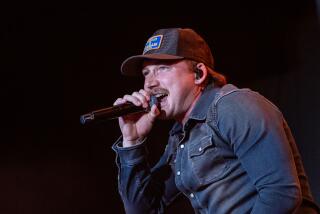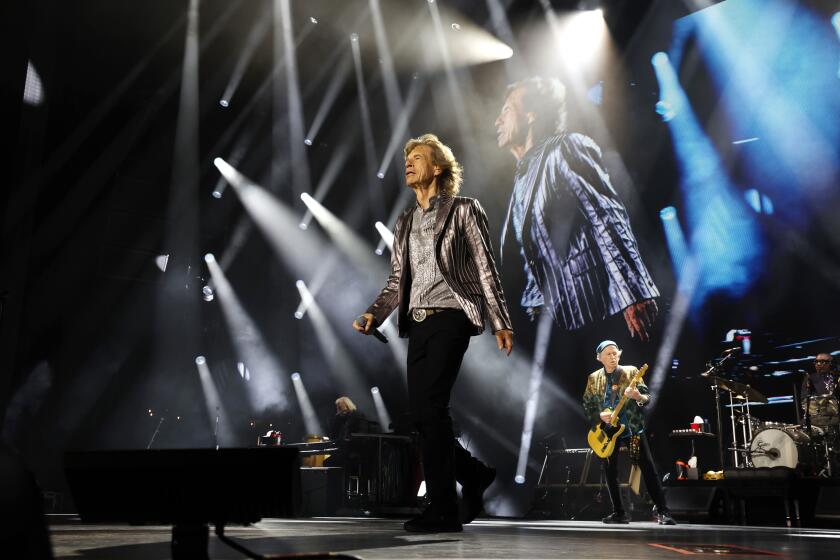Thomas Stockham, 70; Digital Audio Pioneer
Thomas G. Stockham Jr., the internationally recognized “father of digital recording” whose pioneering work in the 1960s and ‘70s revolutionized the recording industry and laid the groundwork for music on compact discs and other forms of digital audio, has died. He was 70.
Stockham, who also served on a panel of audio experts who analyzed President Nixon’s secret White House tapes, died Tuesday of complications related to Alzheimer’s disease at a Salt Lake City hospice.
For his role in the development of digital recording and editing, Stockham received Emmy, Grammy and Academy awards.
He was a professor of electrical engineering at the University of Utah in 1975 when he founded Soundstream Inc., the world’s first digital recording company.
Stockham and his company first captured public attention in 1976.
That year, RCA released “Caruso: A Legendary Performer,” the first in a series of famed opera singer Enrico Caruso’s early 20th century recordings that had been digitally remastered by Soundstream.
Stockham and his colleagues digitally eliminated surface noise and compensated for flaws such as the tinny sound and echoes caused by the primitive recording horns used at the time.
The result: stunningly clear and clean restored recordings of the great Italian tenor.
The same year, Stockham made the first live digital recording, featuring the Santa Fe Opera, and demonstrated his recorder at the annual Audio Engineering Society meeting.
The demonstration caused a stir at the gathering but produced its share of skeptics.
Stockham later recalled that several prominent members of the society told him, “You can make a limited demonstration easily enough, but when you get it in the field, it will fail.”
He spent more than a decade developing the equipment and methods for translating analog sound into a digital format and had encountered his share of disbelievers.
Once the concept of digital audio became a reality, it generated an active and vocal opposition. Many thought sound quality would suffer, giving rise to a group called Musicians Against Digital.
There were even those who believed that digital audio could be harmful to a listener’s health.
“It was silly in those early days,” said his son Tom. “Frankly, people didn’t believe it could be done, and he did it.”
Basically, Stockham took analog waves produced by a microphone or a preexisting recording and digitized them into numbers with a computer. The numbers are stored in a computer and are played by being reconverted into sound waves.
“It was a real big breakthrough,” said Larry DeVries, a distinguished professor of mechanical engineering at the University of Utah and a friend of Stockham.
Vinyl records, DeVries said, are subject to wear, scratches and distortion with time and temperature, “but once you convert the signal to numbers on a computer, they’re permanent.”
And by digitizing sound, DeVries said, “it opened it to the power of the computer for refinement and manipulation that was every bit as important as the permanence part.”
Today, DeVries said, compact disc technology is the norm.
“Without this pioneering work by [Stockham] and others like him, that wouldn’t have been possible,” DeVries said. “In all honesty, it was just a very logical step to go from sounds to pictures. So nowadays we not only have CDs, we also have DVDs. It’s the same basic concept.”
Bob Woods, president of Telarc International, which released the first commercial classical digital recording using the Soundstream technology in 1978, said Stockham’s knowledge “went well beyond just the use of digital recording technology.”
“I can only characterize him as a ‘modern-day man for all seasons,’ whose knowledge of science, especially new technologies, was remarkable,” Woods said.
He was the principal contributing engineer to a digital hearing aid and in the years leading up to the diagnosis of his Alzheimer’s disease in 1994, he worked extensively in digital image processing that aided in the human genome project.
His friends and family recalled him as a modest gentleman who loved teaching and solving problems.
“He was never consumed with trying to get rich off these things or anything close to that,” Stockham’s son said. “He was consumed with trying to make the very best stuff, and when somebody said it could not be done, he’d get a glint in his eye and get it done.”
Born in Passaic, N.J., Stockham earned his bachelor’s, master’s and doctoral degrees in electrical engineering at Massachusetts Institute of Technology, where he was appointed assistant professor of electrical engineering in 1959.
At MIT, he worked on projects involving the primitive digitization of sound -- a process that had been discovered by Claude Shannon at Bell Labs in 1949.
Stockham’s early work, however, had little to do with music.
“We were more interested in digital sound for communication purposes,” he told the New York Times in 1981. “It became apparent, though, that if speech could be digitized, so could music.”
But to make high-quality digital recordings of music, he said, “we needed considerably more power and sophistication than we needed for speech.... I started working on the digital recording of music back in 1962, and it wasn’t until 1970 that the technology required to accomplish it with any commercial feasibility began to emerge.”
He began laying the groundwork for Soundstream after moving to the University of Utah, where he helped create its computer science department.
During 1973-74, he was the primary investigator on the six-member panel that analyzed the White House’s Watergate tapes for Chief U.S. District Judge John J. Sirica.
Stockham and the other panelists concluded that someone deliberately erased the 18 1/2- minute gap on one tape. The finding provided evidence of a coverup and led to Nixon’s resignation.
In 1998, Stockham was elected to the National Academy of Engineering for his contributions to the field of digital audio recording.
In addition to his son Tom, he is survived by his wife, Martha; sons John and David; daughter, Carol Forester; and eight grandchildren.
More to Read
The biggest entertainment stories
Get our big stories about Hollywood, film, television, music, arts, culture and more right in your inbox as soon as they publish.
You may occasionally receive promotional content from the Los Angeles Times.






